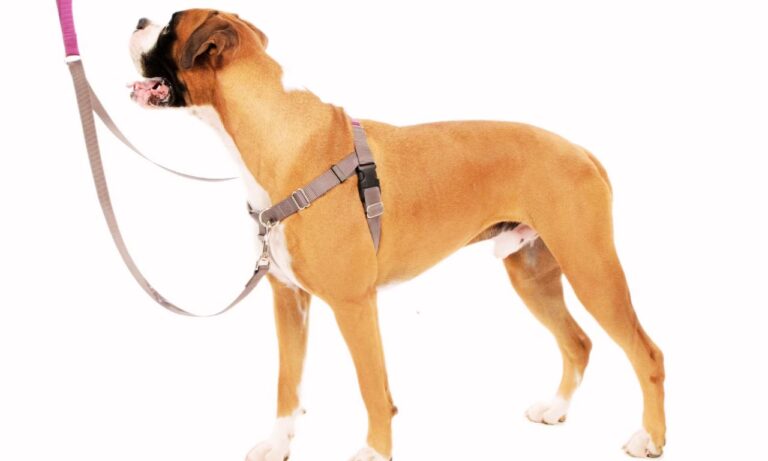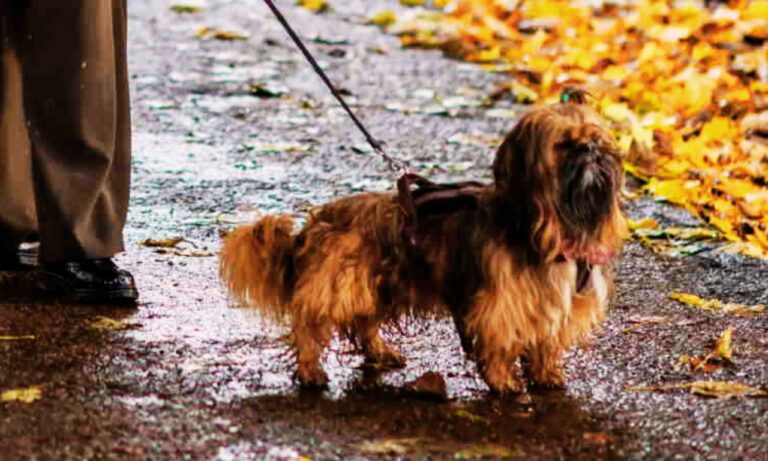In the United Kingdom, public safety and animal welfare are both at the heart of dog legislation. However, the balance between the two has long been debated, especially under the controversial Dangerous Dogs Act 1991, which introduced Breed Specific Legislation (BSL).
This law targets specific List of Banned Dog Breeds UK deemed dangerous, placing restrictions or outright bans on their ownership, breeding, and sale. While designed to reduce dog attacks, BSL has raised major concerns among animal welfare organizations, legal experts, and dog owners.
As of 2025, the law remains in force, and the list of banned breeds has seen some key updates. I will break down the banned breeds in the UK, explain how these laws work, and explore whether breed-based restrictions are truly effective—or if a better approach exists. Discover the ideal fit by learning what size collar for Newfoundland dog to ensure your pet’s comfort and safety.
Blog Highlights
ToggleList of Banned Dog Breeds UK: The Five Banned Dog Breeds in the UK (2025)
According to the Dangerous Dogs Act 1991, the following is the List of Banned Dog Breeds UK:
- Pit Bull Terrier
- Japanese Tosa
- Dogo Argentino
- Fila Brasileiro
- XL Bully (Banned from 1 February 2024 unless exempted)

These breeds are considered to pose a higher risk of aggression and public harm due to their physical strength and historical use in fighting contexts. However, the law focuses on the appearance and characteristics of the dog rather than verified genetic lineage, leading to confusion and, often, misclassification.
The UK currently bans four breeds: Pit Bull Terrier, Japanese Tosa, Dogo Argentino, and Fila Brasileiro. GPS dog collars can help ensure banned or exempted dogs remain within legal areas.
What Does It Mean If a Dog is Banned?
If a dog is on the banned list, it is illegal to own, sell, breed, give away, or abandon it in the UK unless the owner obtains a Certificate of Exemption. Police or local authorities have the power to seize a dog they believe resembles a banned breed, even if the dog has not shown signs of aggression. This can occur in public or private places.
The law’s reliance on visual identification means that many dogs are judged on looks alone—leading to dogs being seized or euthanized despite a calm temperament or friendly nature.
These breeds are restricted under the Dangerous Dogs Act 1991 due to concerns about public safety. Pet tech products help owners monitor exercise, feeding, and well-being.
How Is a Dog Classified as a Banned Type?
Unlike many countries that rely on DNA tests or registered breed lineage, the UK uses physical characteristics to classify dogs. A dog doesn’t have to be a purebred Pit Bull, for example—it only has to match certain traits.

Trained officers use a checklist based on the 1980s American Dog Breeders Association standards, comparing features such as jaw shape, body build, muscle tone, and head structure.
This has led to confusion and fear among owners of mixed breeds or dogs with similar builds, such as Staffordshire Bull Terriers, Boxers, or Mastiff crosses.
For expert tips on how to fit a collar on a Belgian Shepherd, this guide offers simple steps to ensure your dog’s collar fits securely and comfortably.
What Happens If You’re Found With a Banned Breed?
When a dog is suspected of being a banned breed:
- Authorities can seize the dog immediately, even if it’s well-behaved.
- The dog is taken into custody and examined by a dog legislation officer or expert.
- The case is reviewed by a court, which will determine whether the dog should be destroyed or exempted.
If an exemption is granted, the owner must follow a strict list of conditions to legally keep the dog.

Certificate of Exemption: What It Requires
Dogs placed on the Index of Exempted Dogs must meet the following lifelong requirements:
- Neutering by a specific deadline
- Microchipping for identification
- Third-party insurance to cover any liability
- Muzzled and leashed in all public spaces
- Kept in secure conditions at home
- Owners must be over 16 years of age
- Notify authorities if the dog’s address or ownership changes
Failure to comply with these conditions can result in criminal charges and confiscation of the dog.
Exempt dogs must meet strict conditions including registration, microchipping, muzzling in public, and third-party insurance. Electronic dog collars reinforce training for legally compliant behavior.
Spotlight on the XL Bully Ban (2024–2025)

One of the most controversial additions to the banned list is the XL Bully, a large, muscular dog that surged in popularity in the UK over the past decade. Following a spike in dog attacks in 2023, the UK Government included the XL Bully under the Dangerous Dogs Act, citing serious safety concerns.
The ban came into effect in stages:
- 31 December 2023 – England and Wales introduced restrictions on breeding, selling, and public access.
- 1 February 2024 – Full ban on ownership without exemption.
- 23 February 2024 – Scotland followed suit with similar rules.
Owners had a limited window to apply for an exemption. Those who failed to register their dogs in time now face the risk of seizure and potential euthanasia.
This addition reignited debates about individual dog behavior versus breed reputation, with many animal experts and advocacy groups calling the decision “reactionary” and lacking scientific basis.
For detailed guidance on selecting the correct collar size for a Belgian Shepherd, this article provides essential tips to ensure your dog’s comfort and safety.
Is Breed Specific Legislation Effective?
Despite its long-standing implementation, Breed Specific Legislation has not proven to be an effective method of reducing dog attacks. According to government and NHS statistics:
- Between 1999 and 2019, dog-related injuries reported to hospitals increased by 154%.
- A study of fatal dog attacks from 1989 to 2017 revealed that 53 out of 62 dogs involved were not on the banned list.
- From 2020 to 2024, the UK saw a 34% increase in dog attacks, despite the bans remaining in place.
These numbers suggest that banning breeds has not led to a decline in dangerous incidents, and the root of the problem may lie elsewhere.
Breed-specific legislation is widely debated, with many calling for behavior-based assessments instead. Dog training equipment can support safer handling and socialization.
Alternatives to Breed-Specific Laws
With growing criticism of the current approach, animal welfare advocates have proposed alternative models that focus on behavior and owner responsibility, rather than breed:

1. Deed Not Breed Approach
This model judges dogs based on their actions and behavior, not on appearance. Dogs that show signs of aggression are monitored, regardless of breed.
2. Education and Owner Training
Dog ownership is a responsibility that involves understanding canine behavior, socialization, and training. Many experts argue that irresponsible owners and poor training are more dangerous than any specific breed.
3. Early Intervention Programs
Introducing community-based programs where at-risk dogs can be identified and trained, or where owners can receive support, may prevent future aggression.
4. Stronger Enforcement of Dangerous Dog Laws (Section 3 of the DDA)
This section of the law applies to any dog that acts dangerously, regardless of breed. Critics believe this clause should be the primary focus, supported by robust enforcement and public education.
Discover the perfect collar size for an Anatolian Shepherd Dog to ensure comfort and security for your furry friend.
The Call for Reform: Who’s Leading the Fight?
Numerous organizations are actively campaigning to reform or repeal BSL in the UK:
- The Kennel Club
- Battersea Dogs & Cats Home
- RSPCA
- British Veterinary Association
- Dogs Trust
These groups support replacing the current system with evidence-based, breed-neutral policies that consider both the dog’s history and the owner’s behavior.
In recent years, several petitions have reached Parliament, and the government has initiated reviews into the effectiveness of the Dangerous Dogs Act. The 2025 public debate is one of the most active in the law’s history.
Global Perspective: What Other Countries Are Doing
The UK isn’t alone in dealing with the challenges of breed-specific laws. However, many other countries have already shifted away from BSL:
- The Netherlands repealed its breed ban in 2008 due to a lack of evidence supporting its effectiveness.
- Italy had a list of banned breeds but replaced it in 2009 with legislation focused on owner accountability.
- In the United States, several states and municipalities have removed BSL in favor of behavior-based assessments.
- Germany uses a combination of breed restrictions and licensing requirements but allows exemptions based on behavioral testing.
The UK is now under pressure to follow suit and modernize its dog legislation in line with international best practices.
Learn more about the unique double-layered coat of an Anatolian Shepherd and how to care for it effectively.
Conclusion: The Road Ahead
The List of Banned Dog Breeds UK (2025) continues to reflect a legal framework rooted in appearance-based judgments rather than behavior-based assessments. While designed to protect the public, the law has sparked widespread criticism, particularly following the recent addition of the XL Bully.
With statistics showing that breed bans have not curbed the rise in dog attacks, the spotlight is now on reforming the Dangerous Dogs Act 1991. Welfare organizations, veterinary associations, and dog owners are calling for common-sense legislation that promotes responsible pet ownership and targets individual risk factors rather than stigmatizing entire breeds.
For insights on whether Pomeranians should wear a collar, including considerations for safety and alternatives, check out this informative article.
As the debate unfolds, one thing is clear: the future of dog legislation in the UK must be based on science, fairness, and compassion. Until meaningful reform occurs, dog owners must stay informed, follow current laws, and support efforts that pave the way for a more effective and humane approach.





